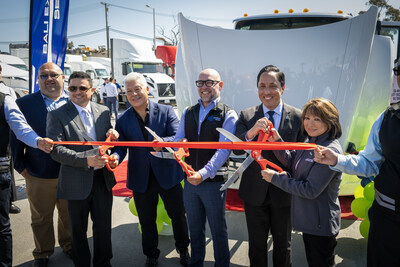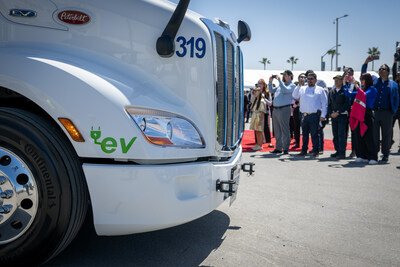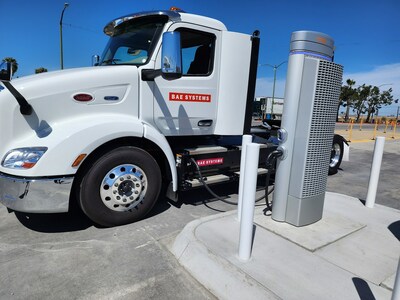FIRST CLASS 8 HEAVY-DUTY ELECTRIC FREIGHT TRUCK MAKES HISTORIC CROSSING OF U.S.-MEXICO BORDER
SDG&E and Bali Express forge path to zero emissions freight transport
These dedicated trucks will utilize recently built charging infrastructure installed by SDG&E designed to provide reliable and accessible charging options for medium- to heavy-duty electric freight trucks crossing the
"Today marks a historic milestone in our journey toward reducing emissions and paving the way for a cleaner energy future," said Caroline Winn, Chief Executive Officer at SDG&E. "This new electric corridor is a great example of how collaboration can create new and innovative ways to rethink how to propel our transportation systems towards electrification."
Juan Baez, owner of the
"We are thrilled to be working with SDG&E in this historic endeavor," said Baez. "By adding electric freight trucks, we are not only reducing our carbon footprint but also leading the way towards a more sustainable future for freight transportation on both sides of the border. We're proud to be a leader in this transition and excited about the first ever crossing."
"The historic crossing of this electric freight truck symbolizes
The chargers were partially funded by a
"To accommodate the transition to zero-emission trucks on both sides of the border, it's critically important we have the necessary infrastructure," said California Energy Commissioner Patty Monahan. "The California Energy Commission is helping fund projects across the state to build a better and more equitable charging infrastructure system for both cars and trucks."
"As a fronteriza, I am thrilled that we're moving forward with the use of bold and innovative energy technology that helps reduce air pollution, offers sustainable cross-border freight transportation, and strengthens our binational and interdependent economy," said Vargas. "I know the binational region firsthand, and this is a great example of the kind of public-private partnerships can improve air quality and promote economic prosperity for the binational region. As the Supervisor for border communities, I am proud and excited that we are moving toward a cleaner, greener and more prosperous future."
The electric charging infrastructure is a part of SDG&E's Power Your Drive for Fleets program. The program connects fleet operators with resources and financial incentives to easily and cost-effectively design and install charging infrastructure for medium- and heavy-duty fleets.
About SDG&E:
SDG&E is an innovative energy delivery company that provides increasingly clean, safe and reliable energy to better the lives of the people it serves in
![]() View original content to download multimedia:https://www.prnewswire.com/news-releases/first-class-8-heavy-duty-electric-freight-truck-makes-historic-crossing-of-us-mexico-border-302114971.html
View original content to download multimedia:https://www.prnewswire.com/news-releases/first-class-8-heavy-duty-electric-freight-truck-makes-historic-crossing-of-us-mexico-border-302114971.html
SOURCE San Diego Gas & Electric (SDG&E)












